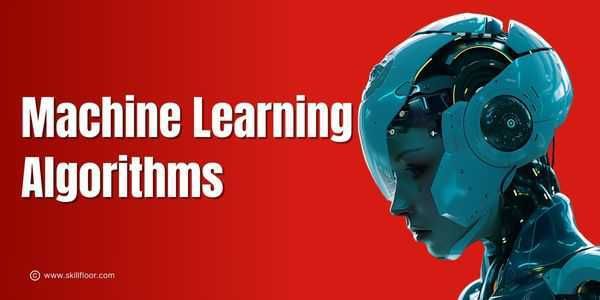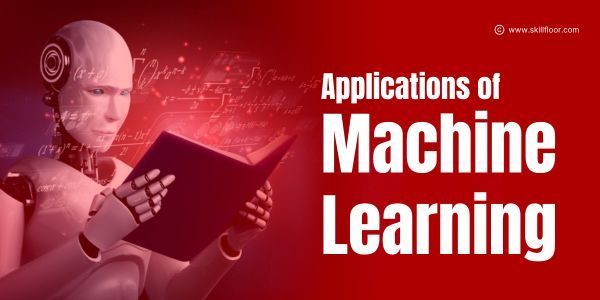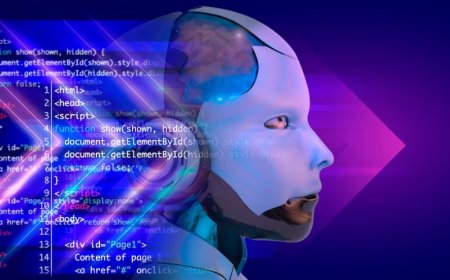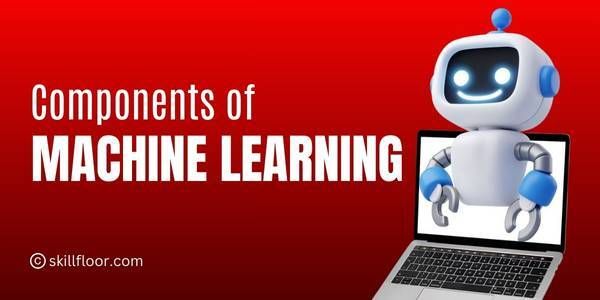Major types of Machine Learning Algorithms
Explore the top machine learning algorithms, their types, and how to choose the best one based on your project needs, from supervised to reinforcement learning.

Jumping into machine learning can feel like walking through a forest with many different paths, and it can be confusing at first. I’ve been there myself, trying to make sense of all the new terms and ideas. But, at the heart of machine learning are algorithms—these are the tools that help computers learn from data and make decisions.
The Importance of Understanding Algorithm Differences
The tricky part is that not all algorithms are the same. How do you know which one is best for your project? There are different types like supervised learning, unsupervised learning, and reinforcement learning, and each one is useful in different situations. Plus, you’ll come across algorithms like neural networks, clustering models, and support vector machines, which might seem complicated at first. Understanding these differences is key to using machine learning successfully.
What are the most important algorithms in machine learning, and how do you select the best one for your needs?
Types of Machine Learning Algorithms
1. Supervised Learning
Supervised learning involves training a model using labeled data—essentially, data where both the inputs and their corresponding outputs are known. Think of it as learning with a teacher who provides correct answers along the way.
-
Common Applications: Predicting customer churn, fraud detection, or classifying images.
-
Common Algorithms: Linear Regression, Support Vector Machines (SVM), Decision Trees.
In practice, supervised learning excels when historical data is available for training and you need to make predictions about unseen data. For example, predicting housing prices using factors like square footage, neighborhood, and number of bedrooms is a classic supervised task.
2. Unsupervised Learning
Unlike its supervised counterpart, unsupervised learning works without labeled outputs. The goal is to uncover hidden patterns, groupings, or structures within the data. It’s akin to exploring a new city on your own and making sense of what you observe.
-
Common Applications: Customer segmentation, anomaly detection, and market basket analysis.
-
Common Algorithms: K-Means Clustering, Hierarchical Clustering, Principal Component Analysis (PCA).
For instance, in marketing, unsupervised learning can group customers with similar purchasing behaviors into clusters, enabling more targeted campaigns.
3. Reinforcement Learning
Reinforcement learning (RL) focuses on training an agent to make sequences of decisions by rewarding desirable actions. There is no explicit training data; instead, the agent interacts with an environment and learns from rewards or penalties.
-
Common Applications: Robotics, game playing (e.g., chess or Go), self-driving cars.
-
Common Algorithms: Q-Learning, Deep Q Networks (DQN).
Reinforcement learning mimics how we teach children: through trial, error, and incremental learning. Imagine training a dog to perform tricks by giving it treats for good behavior.
Top 10 Machine Learning Algorithms
1. Linear Regression
Linear regression predicts a continuous output by modeling the relationship between the input variables and the target output using a linear equation. It’s one of the simplest yet most widely used algorithms in supervised learning.
-
Applications: Sales forecasting, risk assessment, and trend analysis.
-
Advantages: Easy to interpret; computationally efficient.
-
Limitations: Assumes a linear relationship; sensitive to outliers.
This algorithm works by finding the line that best fits a set of data points and predicting outcomes based on the input values provided. For example, predicting house prices based on square footage is a typical application.
2. Logistic Regression
Logistic regression, despite its name, is used for binary classification tasks. It predicts the probability that an input belongs to a specific class, making it suitable for scenarios where you need to categorize data.
-
Applications: Spam detection, disease diagnosis, credit scoring.
-
Advantages: Simple and effective for binary outcomes.
-
Limitations: Limited to linear boundaries; performance degrades with non-linear data.
This algorithm uses a logistic function to convert outputs into probabilities, classifying data points based on a threshold.

3. Decision Trees
Decision trees split data into branches based on conditions, eventually leading to a predicted outcome. The model is intuitive and mirrors human decision-making processes.
-
Applications: Risk analysis, decision support systems, and predictive modeling.
-
Advantages: Easy to visualize and interpret; handles both numerical and categorical data.
-
Limitations: Prone to overfitting; sensitive to small changes in data.
A decision tree resembles a flowchart where each node represents a decision point based on a feature, and each branch leads to a different outcome.
4. Random Forests
Random forests are an ensemble method built on multiple decision trees. By averaging predictions across trees, this method reduces overfitting and improves accuracy.
-
Applications: Classification, regression, and feature selection.
-
Advantages: Robust to noise; reduces overfitting.
-
Limitations: Computationally intensive; less interpretable.
The idea is to create a "forest" of trees, each trained on a random subset of the data and features, and combine their outputs for a more accurate result.
5. Support Vector Machines (SVM)
SVM finds a hyperplane that best separates data points into different classes. Through the use of kernel functions, it works well for both linear and non-linear classification problems.
-
Applications: Image classification, text categorization, and bioinformatics.
-
Advantages: Effective in high-dimensional spaces; works well for non-linear boundaries.
-
Limitations: Sensitive to parameter selection and computationally expensive.
By finding the optimal boundary between classes, SVM maximizes the margin, ensuring the best separation of data points.
6. K-Nearest Neighbors (KNN)
KNN is a simple algorithm that stores all available cases and classifies new cases based on the similarity (distance function). It is often called a "lazy learner" because it only makes computations when queried.
-
Applications: Recommendation systems, pattern recognition, and anomaly detection.
-
Advantages: Simple to implement; no training phase.
-
Limitations: Sensitive to noise and irrelevant features; slow for large datasets.
The algorithm assigns a label to a data point based on the majority class of its nearest neighbours.
7. Naive Bayes
Naive Bayes is a probabilistic classifier based on Bayes’ theorem, assuming that all features are independent. While the independence assumption is often unrealistic, the model performs surprisingly well in many applications.
-
Applications: Text classification, sentiment analysis, and spam detection.
-
Advantages: Fast; works well with high-dimensional data.
-
Limitations: Assumes feature independence; can be less accurate with highly correlated data.
The model works by calculating the probability of a data point belonging to a specific class and choosing the one with the highest likelihood.
8. K-Means Clustering
K-means clustering partitions data into ‘k’ groups by minimizing the variance within each group. It’s a popular unsupervised learning algorithm for segmentation tasks.
-
Applications: Customer segmentation, image compression, and market segmentation.
-
Advantages: Simple and efficient; works well for distinct clusters.
-
Limitations: Sensitive to initial centroids and outliers; assumes spherical clusters.
The algorithm works iteratively to assign data points to one of ‘k’ clusters based on similarity.
9. Gradient Boosting Algorithms (GBM, XGBoost)
Gradient boosting builds a strong predictive model by combining multiple weak learners (often decision trees). XGBoost, an optimized implementation, is known for speed and accuracy.
-
Applications: Competition-winning solutions, fraud detection, and predictive modeling.
-
Advantages: High accuracy; handles complex relationships well.
-
Limitations: Prone to overfitting without tuning; slower training compared to simpler models.
Each tree corrects the errors of the previous ones, creating a model that performs well on complex tasks.
10. Neural Networks
Inspired by the human brain, neural networks consist of interconnected layers of nodes (neurons). They can learn complex patterns and relationships, making them powerful for tasks like image recognition, natural language processing, and gaming.
-
Applications: Image recognition, speech-to-text conversion, autonomous vehicles.
-
Advantages: Handles complex data patterns; adaptive learning.
-
Limitations: Requires a large amount of data; computationally expensive and less interpretable.
These models, from simple feedforward networks to more complex architectures like convolutional and recurrent neural networks, are driving the AI revolution.
Supervised vs. Unsupervised vs. Reinforcement Learning Algorithms
-
Supervised Learning: Used when you have labeled data and want to predict or classify new data.
-
Unsupervised Learning: Focuses on discovering patterns in unlabeled data.
-
Reinforcement Learning: An agent learns through interactions and feedback from its environment.
The choice between these depends on the data and goals of the project.
Factors to Consider When Choosing a Machine Learning Algorithm
Selecting the right machine learning algorithm is essential to building an effective model. Here are key factors to consider:
1. Nature of the Data
-
Size and Quality: The volume and quality of your dataset influence the choice of algorithm. Some algorithms, like deep learning models, work well with large datasets, while others, like decision trees, can be more suitable for smaller datasets.
-
Structured vs. Unstructured Data: If you have structured data (organized in rows and columns), algorithms like logistic regression or decision trees might work well. Unstructured data (like text or images) often needs more complex algorithms like convolutional neural networks (CNNs).
2. Type of Problem
-
Classification or Regression: Algorithms like support vector machines (SVMs) and decision trees are great for classification tasks (categorizing data). For predicting continuous outcomes, regression algorithms (e.g., linear regression) are more appropriate.
-
Clustering or Association: If you’re looking to group similar data points without predefined labels, consider unsupervised algorithms like k-means clustering.
3. Accuracy vs. Interpretability
-
Accuracy: Complex algorithms (e.g., neural networks) often provide higher accuracy but may require more data and computational power.
-
Interpretability: Simpler models, like decision trees or linear regression, are easier to interpret, which can be important in fields where you need to explain decisions (e.g., healthcare).
4. Computational Complexity and Resources
-
Training Time: Some algorithms are faster to train than others. For example, Naive Bayes models tend to train quickly, while deep neural networks can take hours or even days.
-
Hardware Requirements: Algorithms like deep learning models often require GPUs to process data efficiently. If computational resources are limited, simpler algorithms may be more practical.
5. Dimensionality of Data
-
High-dimensional data (with many features) can lead to the "curse of dimensionality," making some algorithms less effective. Algorithms like principal component analysis (PCA) can help reduce dimensionality before applying models.
6. Need for Real-Time Predictions
-
If your application requires quick, real-time predictions, consider algorithms optimized for speed, like logistic regression or support vector machines, rather than slower, complex models.
7. Overfitting Tolerance
-
Overfitting occurs when a model learns the training data too well but performs poorly on new data. Regularized algorithms (like ridge regression) and simpler models tend to be less prone to overfitting compared to complex models like deep neural networks.
8. Scalability
-
If you anticipate your data growing significantly, you need algorithms that scale well with increasing data size. Gradient boosting machines and neural networks often require substantial tuning and resources as data grows.
9. Business or Project Constraints
-
Time to Implement: Some models are easier to set up and require less tuning than others.
-
Cost: The budget for hardware, software, and skilled personnel can also guide the choice of a model.
10. Handling Missing and Imbalanced Data
-
Some algorithms, like decision trees, can handle missing values effectively, while others (like SVMs) may require preprocessing steps.
-
For imbalanced datasets (e.g., fraud detection), you might need specialized techniques, such as using algorithms that support weighted classes or oversampling/undersampling techniques.
Machine learning algorithms are essential tools in AI, each serving specific needs. Supervised Learning is ideal for tasks with labeled data, like predictions. Unsupervised Learning identifies patterns in unlabeled data, while Reinforcement Learning is used for decision-making in dynamic environments like robotics.
The choice of algorithm depends on data type, problem complexity, and available resources. Simple tasks may use algorithms like Linear Regression, while more complex ones might require Neural Networks. Ultimately, selecting the right algorithm ensures an effective, efficient solution tailored to the task.




























































